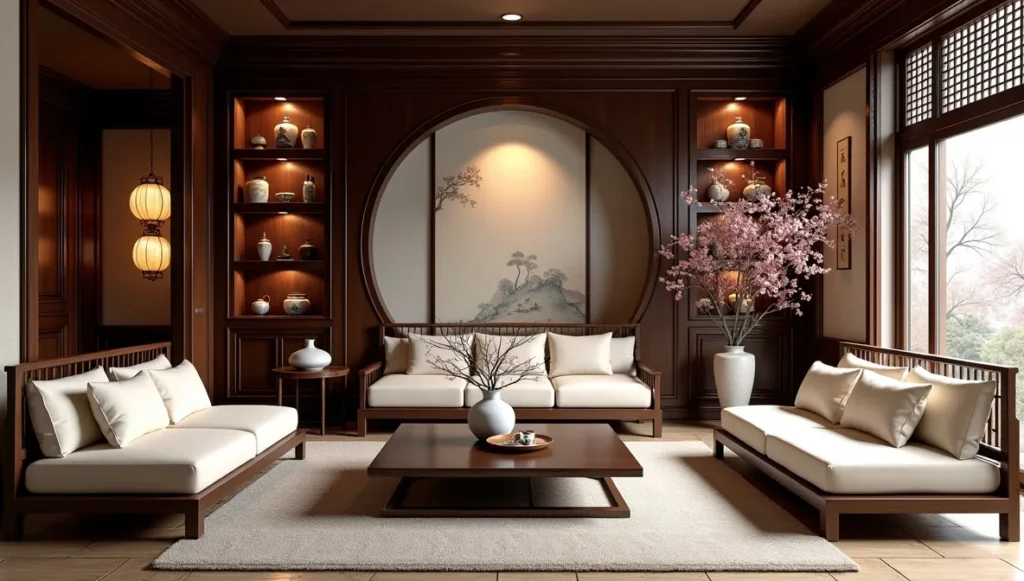- Wabi-Sabi Interior Design: The Japanese Way of Finding Beauty in Imperfection - September 6, 2025
- Japanese Zen Interior Design: Why Less Really Is More - September 4, 2025
- Modern French Interior Design: Why Everyone’s Falling in Love (And How to Bring It Home) - September 3, 2025
Table of Contents
So this all started because of Mrs. Wu. I was 25, fresh out of design school, and visiting my friend’s grandmother in San Francisco’s Chinatown. Her apartment was maybe 600 square feet, but walking in there was like… I don’t know how to describe it. Everything just made sense.
“Small space, big energy,” she told me while pouring tea. “Everything has purpose.”
I’d been struggling with my own apartment at the time. Lots of stuff, zero peace. Her place? Complete opposite. That conversation basically changed my career path.
I still have the old photo of Mrs. Wu’s apartment, here it is.
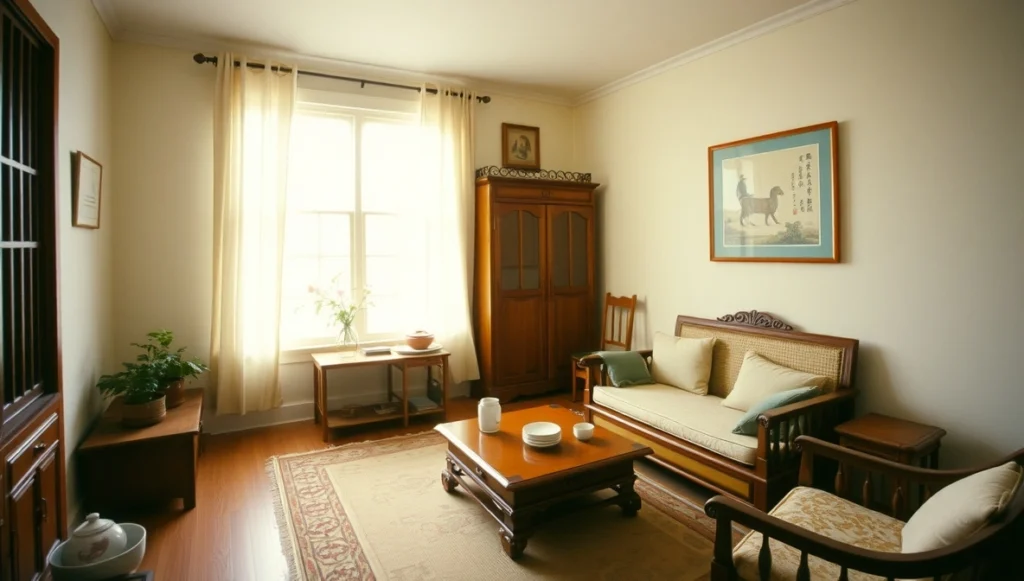
Why Chinese Design Hits Different
Here’s the thing about Chinese interior design. It’s not about throwing some red pillows around and buying a Buddha statue (please don’t do that, by the way). This style has thousands of years of philosophy behind it. Taoism, Confucianism, feng shui principles.
But you don’t need a PhD in ancient Chinese philosophy to get it right. After working with tons of clients, I’ve figured out that it really comes down to this: everything should work together. No single piece trying to steal the spotlight.
Western design loves drama and statement pieces. Chinese design? It’s all about that flow and balance.
The Basics You Actually Need to Know
Feng Shui Without the Overwhelm
Okay, feng shui can get super complicated. I’ve been studying it for years and still learn new stuff regularly. But there are some simple things that make a huge difference.
Think of energy like water moving through your house. You want it flowing smoothly, not getting stuck in weird corners or racing straight through from front door to back door.
Quick test: Stand at your front entrance. Can you see straight through to a back door or window? If yes, your energy’s probably rushing out too fast. Stick a plant or small table somewhere in that path. Problem solved.
The bagua map thing is helpful too, but don’t stress about getting it perfect. Your house has nine zones for different life stuff. Wealth corner (back left from your entrance) likes plants. Relationship area (back right) does well with pairs of objects.
Five Elements Thing
Every room needs some wood, fire, earth, metal, and water energy. Sounds weird, but it works.
I had this client whose home office felt completely chaotic. Turns out it was all fire energy. Red everywhere, sharp angles, bright lights. We added some plants (wood) and a small water fountain. Completely changed the vibe.
Here’s how it breaks down:
- Wood = plants, wooden stuff, green colors
- Fire = lighting, candles, red accents
- Earth = ceramics, square shapes, beige/brown tones
- Metal = white colors, round shapes, actual metal
- Water = fountains, mirrors, blues and blacks
The trick is balancing them for what each room needs to do.
Colors and What They Actually Mean
Everyone thinks Chinese design equals lots of red. Wrong. Too much red makes people anxious, not happy. I use red in small doses. Maybe some throw pillows, artwork, or a decorative bowl.
Gold’s for prosperity but again, don’t go crazy. A few gold picture frames or a nice serving tray works better than gold everything.
What surprises people is how much neutral colors matter. Warm whites, soft grays, gentle beiges. These give you a foundation so the symbolic colors can do their thing without overwhelming anyone.
Black might seem negative but in Chinese philosophy it represents wisdom and depth. Great for accents in pottery, frames, or furniture details.
I came across this living room in a Chinese family home, it perfectly captures how color and balance work together.
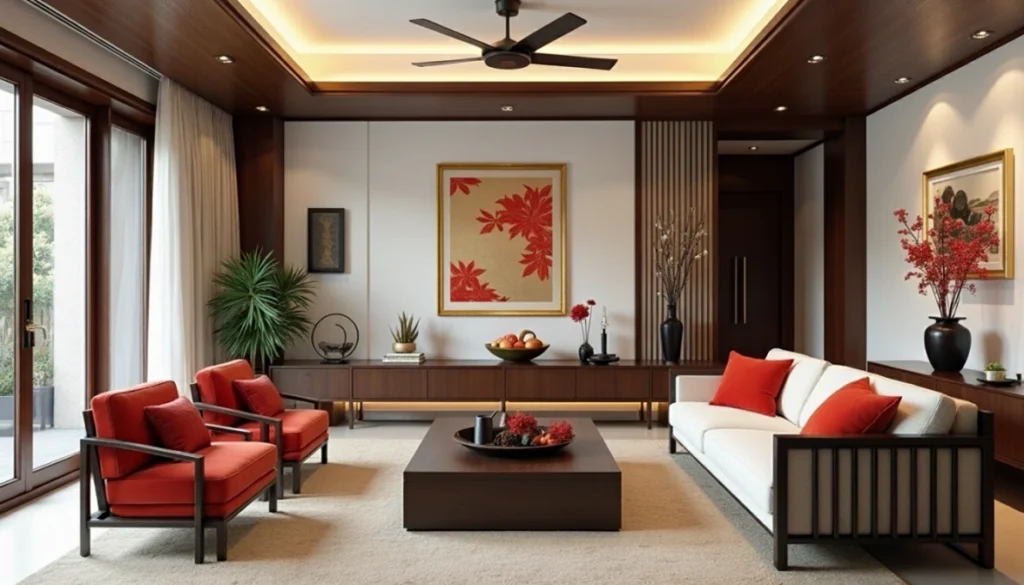
Furniture That Lasts Forever
Traditional Chinese furniture focuses on quality craftsmanship over whatever’s trending this season. Look for clean lines, natural wood grain, and pieces that sit lower to the ground.
Rosewood and mahogany are classic but expensive these days. Bamboo works great and costs way less. The key characteristics: horizontal rather than vertical emphasis, minimal decoration, and really good construction.
Storage should be built into pieces rather than added on later. A bench with storage inside, or a room divider with shelving built in.
Room by Room (The Real Stuff)
Living Room
Your main sofa needs to face the entrance but not be right in the energy pathway. Coffee table should be lower than your sofa arms. Round or oval shapes work better than sharp rectangles.
For lighting, skip the harsh overhead stuff. Paper lanterns, table lamps with fabric shades, anything that creates soft, warm light.
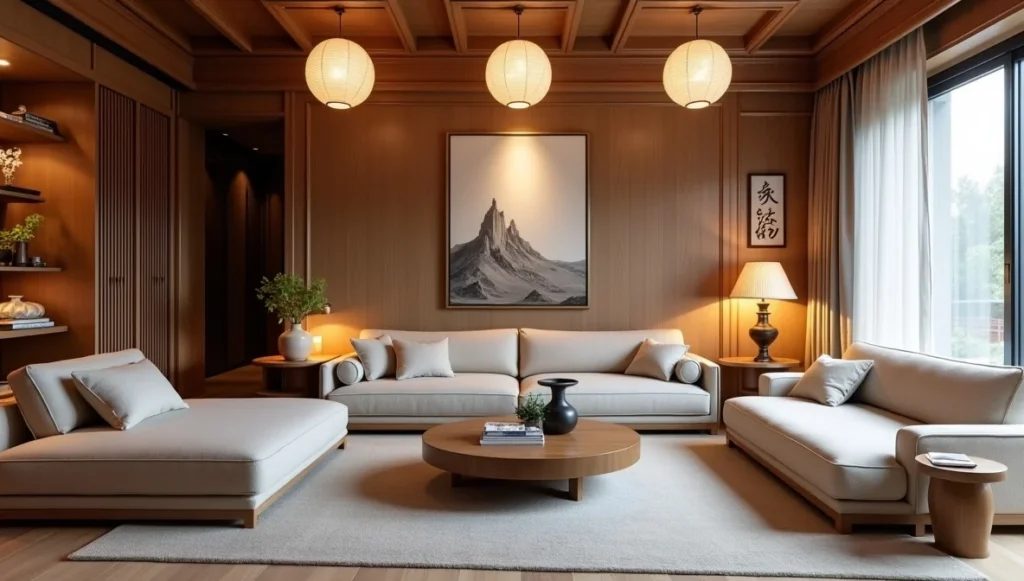
Bedroom
Never put your bed where you’re staring straight at the door when you lie down. Also avoid sticking it under a window. Best spot is diagonal from the door with a solid wall behind your headboard.
Keep colors calm. Earth tones, soft pastels. Save bright colors for rooms where you want energy, not where you’re trying to sleep. And hide all storage. Visible clutter messes with sleep quality.
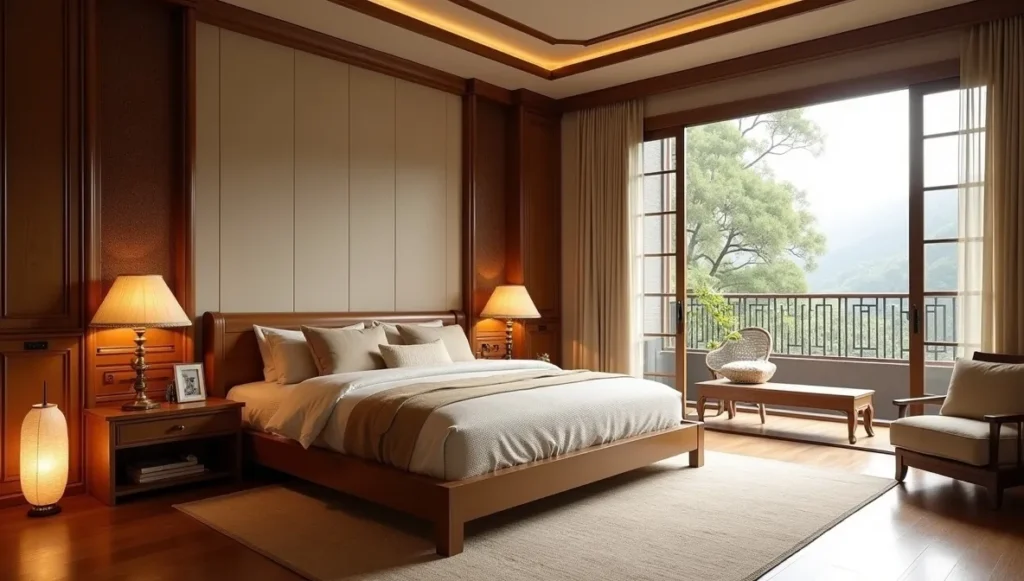
Kitchen
The person cooking should be able to see who’s coming into the kitchen. Traditional setup lets the cook stay connected with family activities.
Try to separate your stove and sink a bit. Fire and water elements can clash when they’re too close. Natural materials work best here. Stone counters, wood cabinets, ceramic tiles.
A kitchen feels calmer when everything has its place. Tuck things away instead of filling open shelves with clutter, it keeps the space looking peaceful and organized.
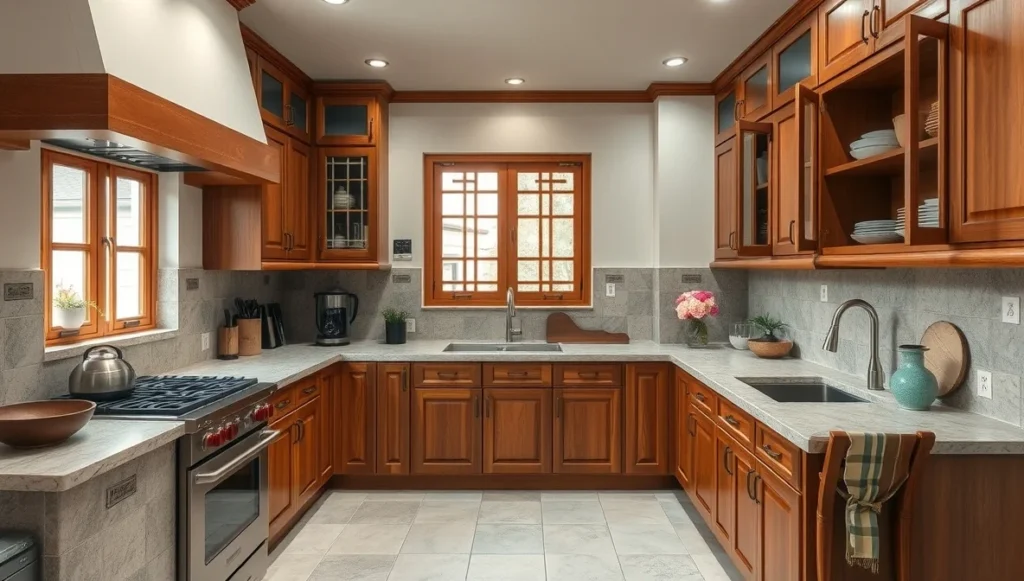
Dining Room
Round tables are traditional because they promote equality. Nobody’s sitting at the “head” of the table. If your space needs a rectangle, get one with rounded corners.
A sideboard or hutch gives you storage plus a place to display meaningful family pieces. Maybe some ceramics that have been passed down, or artwork that tells your family’s story.
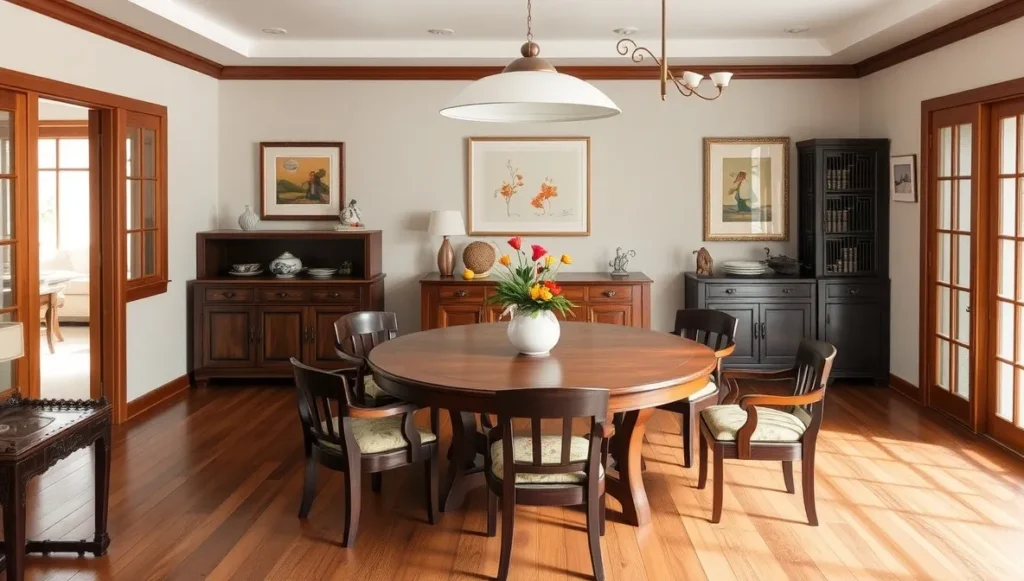
Home Office
Your desk should face the door with a solid wall behind you. This “command position” makes you feel more secure and focused.
Mix your bookshelves up. Not just books, but meaningful objects and things that represent your goals. Colors should help concentration. Deep blues, forest greens, rich browns work well.
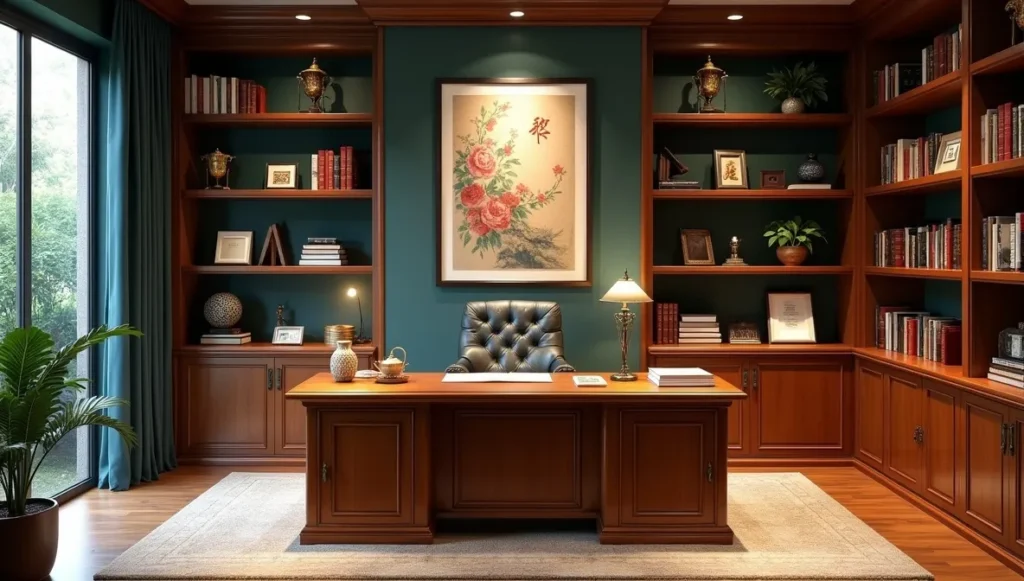
Bathroom
Keep the door closed always. Good ventilation is crucial since these rooms can drain energy from the rest of the house.
Use natural materials like bamboo and stone to warm up what can otherwise feel like cold spaces. Position mirrors so they reflect something nice, not the toilet. Plants that like humidity help purify the air and energy.
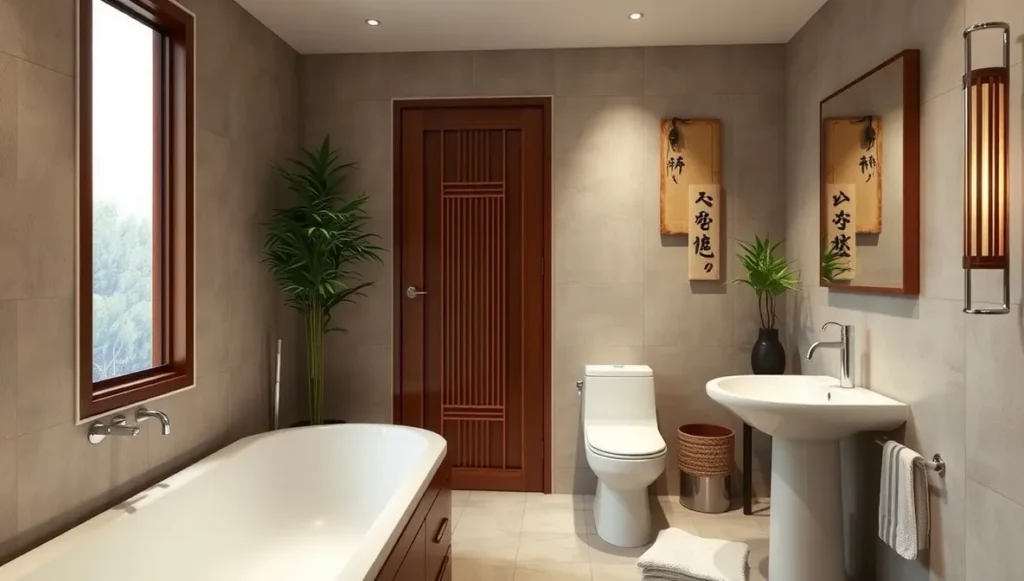
Kids’ Rooms
Kids need space to be energetic but also need to wind down for sleep and homework. Wood element dominates here since it promotes growth and learning.
Study area should follow the same desk placement rules as adult offices. Face the door, good natural light from the side. Mix educational stuff with treasured possessions on shelves so kids learn to value both learning and personal things.
For storage, wooden toy chests or wicker baskets teach organization while keeping visual clutter down.
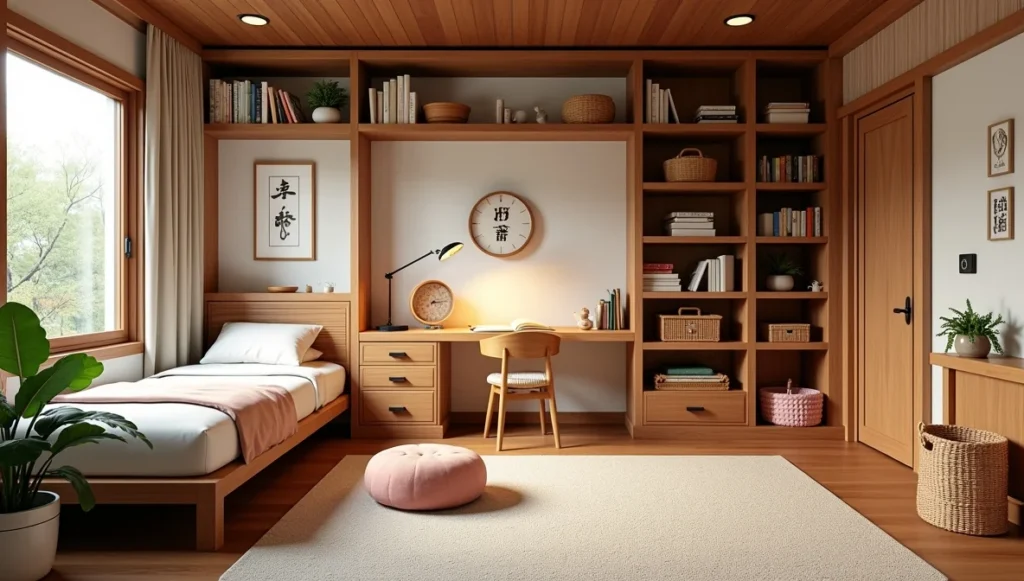
Entryway
This sets the tone for your whole house. Keep it simple and uncluttered. A nice wooden console table or bench gives you a place for keys and bags without creating chaos.
Mirror positioned to reflect natural light (but never directly facing your front door) makes small spaces feel bigger. Fresh plants welcome people and bring good energy to the transition zone.
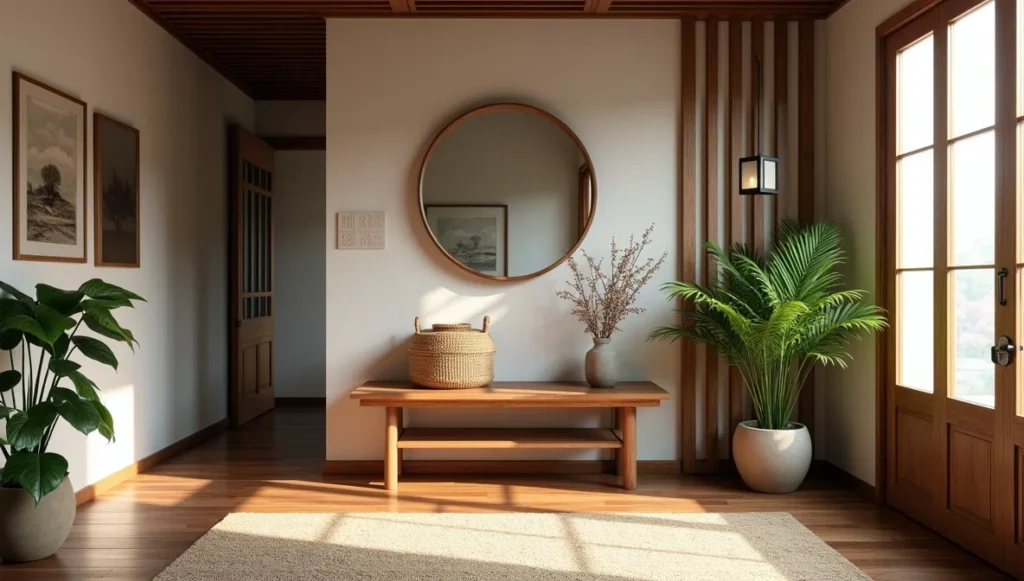
Guest Rooms
Keep these neutral and simple so visitors feel comfortable without being overwhelmed by your personal stuff. A seating area separate from the bed gives guests their own space.
Add thoughtful touches like a small tea set or nice calligraphy piece, but don’t make it too personal.
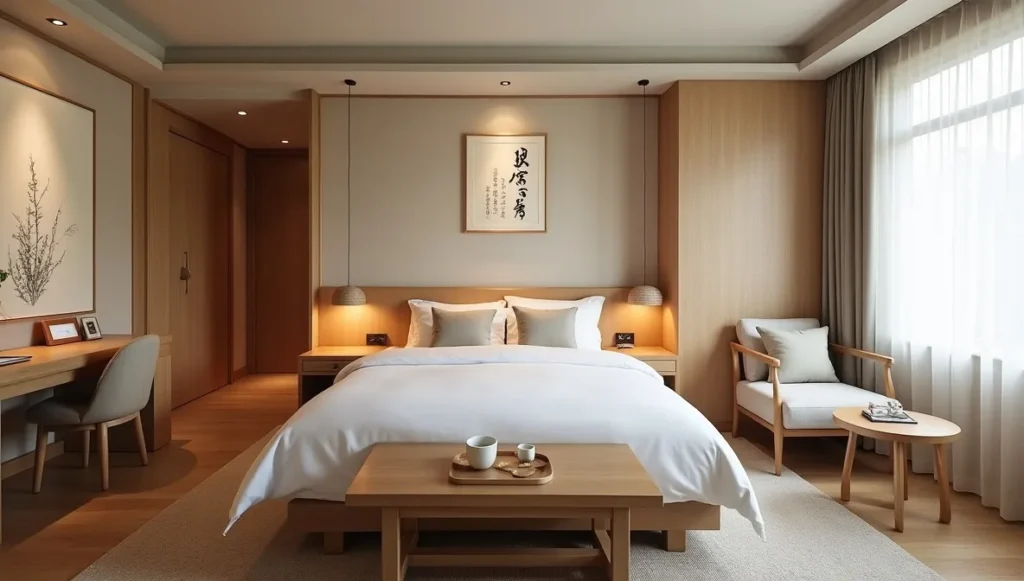
Making It Work Today
Modern homes look different from traditional Chinese houses, and that’s fine. Open floor plans need creative solutions. Use area rugs, lighting changes, or furniture placement to create subtle boundaries between living, dining, and kitchen areas.
Hide your technology in beautiful cabinets that close when you’re not watching TV or whatever. Smart home features should make life easier, not more complicated.
You can use contemporary materials as long as you maintain the right proportions and energy flow principles.
Don’t Do These Things
Biggest mistake: thinking more red automatically means more Chinese style. Use red strategically, not everywhere.
Don’t mix up different Asian styles. Japanese minimalism has different goals than Chinese traditional design. Thai and Vietnamese styles are their own things. Each deserves respect for what makes it unique.
Scale matters a lot. Chinese furniture tends to be lower and more horizontal than typical Western pieces. Mixing dramatically different scales messes up the visual harmony.
Don’t block natural light with heavy curtains. This goes against everything about connecting indoor and outdoor energy.
Worth Investing In
Buy fewer, better pieces rather than filling your space with cheap imitations that won’t last. A genuine rosewood coffee table or antique screen can anchor a room’s design for decades.
Hand-painted silk wall hangings, ceramic garden stools, carved jade accessories become family heirlooms. These pieces cost more upfront but their durability and timeless appeal make them worth it financially and emotionally.
Getting Started Without Going Crazy
Start by decluttering. Get rid of stuff that doesn’t serve a purpose or make you happy. This one step often creates immediate improvements in how spaces feel.
Add natural elements gradually. A bamboo plant, ceramic bowl, or piece of natural wood can start shifting energy toward better balance.
Maybe talk to someone who knows feng shui for an initial look at your space. Small furniture moves or mirror adjustments can make surprisingly big differences.
Trust your gut though. If a space feels good to you, it probably has decent feng shui. This whole approach is supposed to support human wellbeing, so your comfort matters most.
The goal isn’t creating a museum display of Chinese artifacts. It’s about making your daily life feel more harmonious and purposeful by applying some really old, really smart principles about how humans interact with their spaces.
